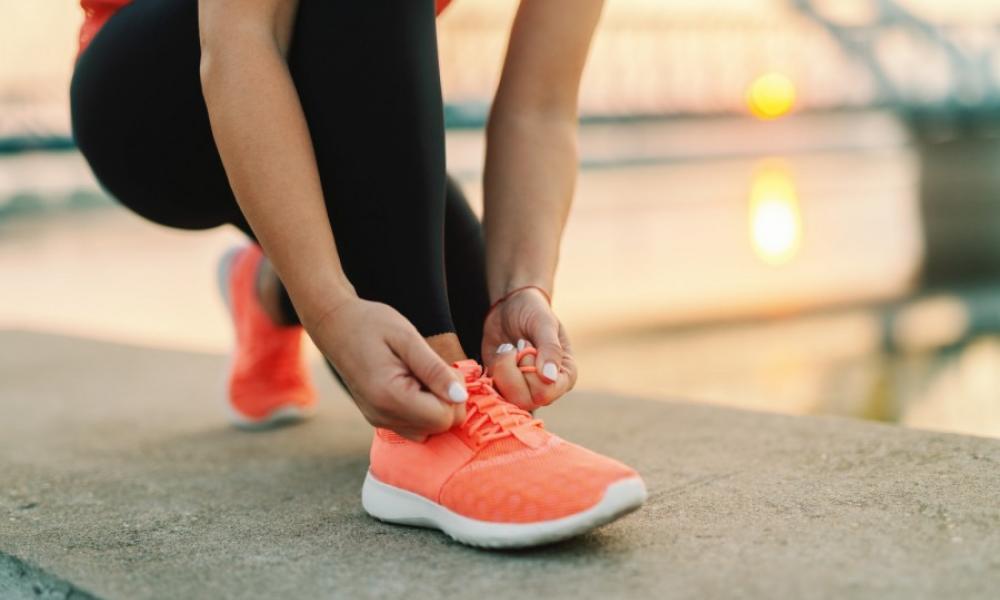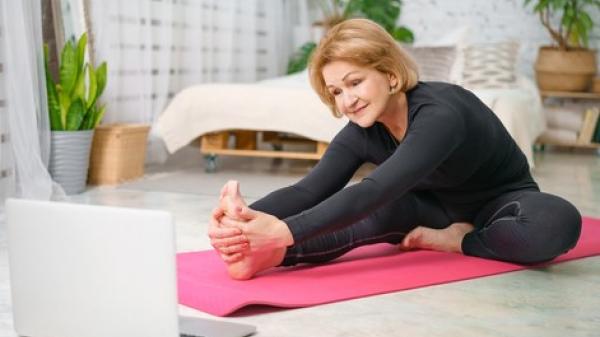
Choosing shoes
Getting the right shoes will make a difference for almost all foot problems and the importance of appropriate footwear should not be underestimated. A bit of trial-and-error to get the right shoes might remove the need to seek out professional help.
Changes to shoes will be part of most professional discussions about foot problems. Comfort should be the main consideration when choosing shoes.
High-heeled shoes or shoes that pinch your feet can contribute to the development of deformities such as bunions or hammer toes (a toe that is bent permanently downwards).
Your feet may change shape as you get older, especially if you have arthritis, so you may need to try a different size or width fitting. If the footwear protects your feet against injuries, supports them and keeps them warm, dry and comfortable, it's doing its job.
An adequate fastening will improve fit generally and help if the feet swell.
Leather uppers are usually the most comfortable if you have foot problems, although many modern materials offer breathability, flexibility and comfort. Look for a cushioning sole unless you've been advised by a doctor or podiatrist that rigid soles are better for your particular foot problem.
If you have hammer toes or prominent joints, look for a smooth lining without seams.
If you need special insoles or orthoses, make sure there's enough room to fit them, especially in the toe area.
Around the house, slippers may feel the most comfortable for hammer toes and prominent joints, but make sure the soles provide adequate cushioning. You should also make sure that they are non-slip/trip. Always wear shoes when you're outside to make sure your feet are properly supported.
Factors to consider when buying shoes
Have your feet measured if they've become wider over the years or have changed shape because of your axSpA. Your feet may change shape when you stand up, so have them measured while standing. Many shops have experienced fitters.
Try shopping later in the afternoon. If your feet tend to swell, they'll be at their largest at that time.
Judge a shoe by how it feels on your foot and not just by the size marked on the shoe. Size varies between shoe brands and style. Think about how the shoe fits around your toes, under the soles and at the back of the heels.
Always buy your shoes to fit the larger foot; many people have one foot bigger than the other. An insole can be used in the other shoe. There can be at least 1 cm of room at the front of the biggest toe.
Try shoes on with the type of socks or stockings you normally wear or with any insoles (or orthoses) you normally use. Some insoles may need extra depth, especially in the toe area.
Don't buy shoes to break in later; the right shoes for you will be comfortable when you first try them on.
Buy shoes that have both leather uppers and inners (the inner lining) if possible. These are more breathable than inners made of synthetic materials and will help to avoid dampness and fungal infections.
Look for dark colours and a suede finish if you're worried about the appearance of your feet - they'll help to minimise the problem.
Insoles
You may need insoles in your shoes for a number of reasons. An insole (or orthosis) can help to support the arch of your foot. If you have arthritis in the joint across the middle of your foot (the mid tarsal joint), a rigid insole may help. If you have one foot bigger than the other, an insole can help to pad out the shoe of your smaller foot.
Insoles will often take up half a shoe size, so take along your largest shoes when you go for an insole fitting. Sometimes you may need to purchase a larger shoe to accommodate an insole, although this is not always the case. Take your insoles along when you buy new shoes.
If you need to wear a prescribed insole, don't try to wear the new insole all day when you first receive it. Wear it for a short period at first and gradually build up to longer periods. Don't use them for heavy duty activity or exercise.
If you change your shoes indoors, either have a second pair of insoles for your indoor shoes or remember to swap the insoles over. Your feet will return to their old shape while indoors and will never be comfortable if you don't continue to wear your insoles.
Fastenings to help you
Lace-up shoes can be difficult to fasten if you have arthritis in your hands. Here are a few alternatives:
- Elastic laces can be easier to use because one pull ensures a snug fit and they don't need to be tied.
- Many shoes are now available with Velcro fastenings, which can be done up and adjusted using only one hand.
- A zip fastening can be easier to manage than laces or buckles, and a ring (such as a keyring) added onto the zip pull can make it easier to pull up.
There are also a number of devices available to help people with putting on socks, tights/stockings and shoes.
Struggling to find the right shoe?
If you have permanently swollen feet, very narrow, long, or broad feet, or with hammer toes or bunions you may find it difficult to find shoes that fit them well.
A number of retailers are beginning to stock shoes with extra width and depth, which can help.
Some people may have footwear prescribed by their rheumatologist, GP or podiatrist.
Wearing slippers around the house
You may prefer to wear slippers around the house. However, slippers aren't a good idea for those who have to wear special insoles. They also sometimes contribute to falls in the elderly. The uppers of slippers are often soft, so they're comfortable for hammer toes and prominent joints, but the soles may lack adequate cushioning and grip.
Like outdoor shoes, slippers should fit properly and shouldn't be too loose. Backless slippers and slippers with high heels really should be avoided. The features of the ideal slipper are generally the same as for the ideal shoe.
Wearing safety footwear
If your existing safety footwear is uncomfortable, you may need to talk to your employer about getting alternatives. Safety versions of extra-depth and cushioned shoes are available. If you suffer from toe or foot ulceration, make sure that safety footwear is not causing pressure or pain to your wounds.
Dealing with cold feet
Many slippers, shoes and boots are available with linings such as sheepskin or synthetic fur to help keep the feet warm. Wearing thicker socks or two pairs (as long as they're not too tight) not only helps to keep the feet warm but also provides extra cushioning under the soles of the feet.
Keeping the feet warm will also be easier if you keep the rest of your body warm.
What shoes should I wear when I'm exercising?
What you wear on your feet is important. Running shoes are usually the best shoes for exercising.
It's important that your shoes:
- fit well, so your foot is held firmly in the shoe and doesn’t slide around
- have a soft, well-cushioned sole to absorb shocks and protect your joints.
Wider-fitting shoes will make sure your toes aren’t squashed.
Your doctor may refer you to a podiatrist, who can give you expert advice on specialist shoes and insoles.









